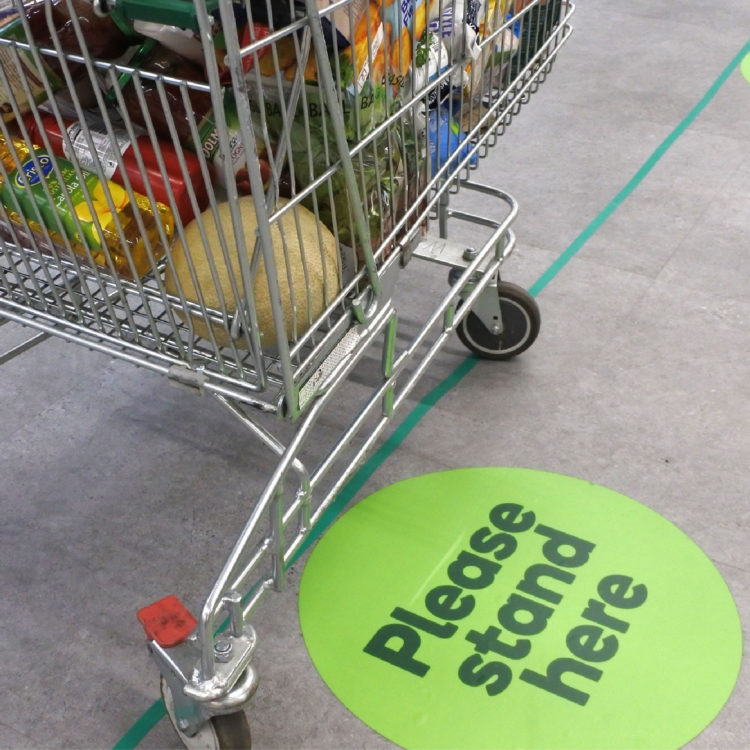Seasonal Swing Area: 5 Important Factors to Consider

While most people think of seasonality as the four primary seasons – spring, summer, autumn, winter – any modern retailer will tell you that when it comes to seasonal merchandising programs, they are often juggling a retail calendar that has anywhere between 13 to 20 seasons.
With each new seasonal program comes merchandising turnovers, restocks, and resets, which often fall on store-level associates to execute. With the current labor shortage, executing so many seasonal merchandising programs can become a burden.
Given all the work involved, why are retailers continuing to incorporate seasonal merchandising into their retail strategy?
The answer is simple: a seasonal merchandising strategy is a proactive way to celebrate the occasions most important to consumers. By serving customers what they need when they need it, retailers can build an emotional connection with their shoppers, ultimately leading to a more engaging shopping experience.
Let’s look at five ways retailers can structure their seasonal merchandising programs to be easy to execute at the store level.
1. Timing Your Transitions
Before you set off on a lofty quest to transform your store, it’s essential to consider the timeline for how you will achieve the goals of each seasonal program. Start by listing out all of the seasons you want to showcase. Next, determine what activities or tasks that will need to be done in order to accomplish these. Once you have both, create a Gantt chart that maps out each seasonal activity for the year. By doing this, you’ll be able to assess when and how to approach your change-overs.
2. Display Versatility
Retail store displays play an important role in the aesthetics of your store, but their function and purpose doesn’t end there. The right displays can help your store adapt to your merchandising needs throughout the year. Whether you’ve already chosen your fixtures or are in the process of finding new ones, it’s vital to assess your display’s capabilities on the following five questions:
- How portable is your display?
- What effort is required by store-level associates to set it up?
- How much flexibility does your display provide for layout changes?
- How can I brand my displays to match store decor and seasonal themes?
- What is the financial investment to purchase and/or upkeep your displays?
Once you have a general idea of what your displays can achieve, you can then brainstorm how to adapt your swing areas for each seasonal program.
3. Planning Your Space
You’ve decided on what seasons to highlight. You know what displays you want to use. Now it’s time to get creative and design your layout, get your planograms in order, and strategize your visual merchandising. When it comes to planning your design, understanding how to accomplish the transition of each area will play a huge role in your success. Building a flex area into your store’s layout is easy when using a zone layout strategy. This helps define how each section of your store will be used throughout the year. For seamless transitions, use two of your zones as rotating seasonal swing areas. This will allow for any overlap between seasons while also giving you the flexibility to organize merchandising resets efficiently.
4. Space Allotment Plan
When it comes to stocking up for a seasonal program, product life cycles are often measured in weeks or even days. With this comes the common challenge of product planning. Frequently, retailers are trying to find the right balance between ordering too much stock or not enough. By using a demand-driven space allotment plan, the space you allocate to seasonal products will increase and decrease with both your ramp-up and ramp-down methods. This helps you scale your seasonal programs based on consumer demand and not solely on the fact that you have space to fill.
5. Engagement
A seasonal program allows retailers to refresh their space and delight customers every time they shop in-store. But simply changing out your product may not be enough. There are a variety of ways to engage with shoppers through your seasonal programs. From a temporary store-within-a-store pop-up to hosting events or workshops to offering personalized services, all these tactics can help you captivate your customers through an immersive experience that will lead to more sales.
All retailers need to have a seasonal adaptation plan for their stores. It helps keep things fresh for the customer and provides a plan of action for dealing with seasonal merchandise. By addressing each of the five factors discussed, you’ll be able to start your seasonal projects off on the right foot. Watch our webinar on Seasonal Adaptation to learn more about how to adapt your retail space from season to season.


